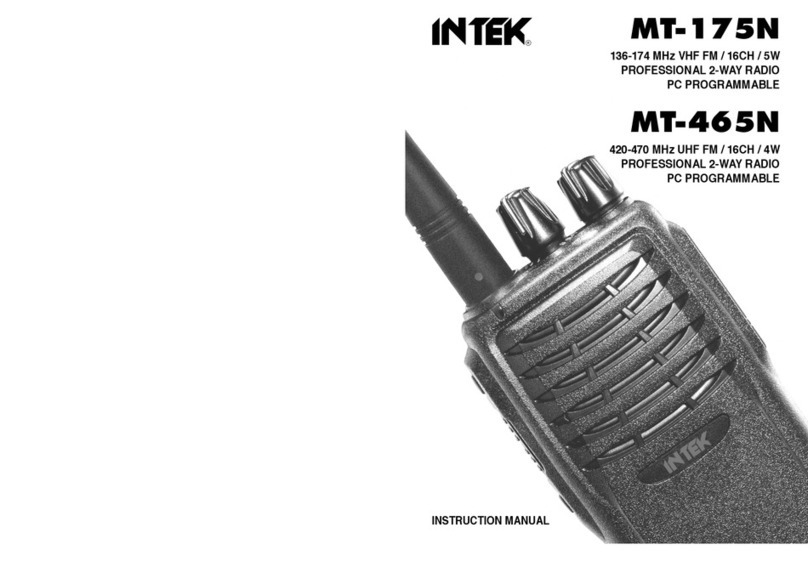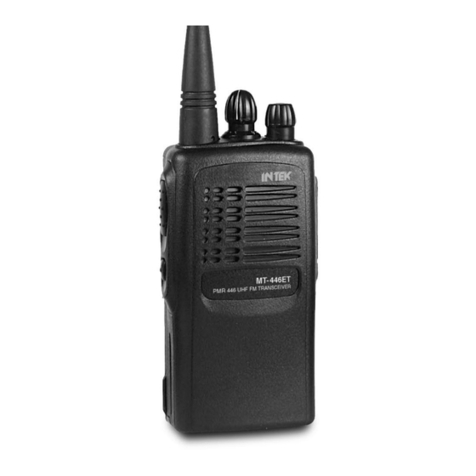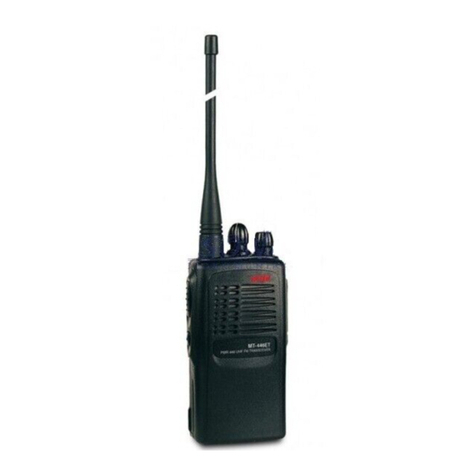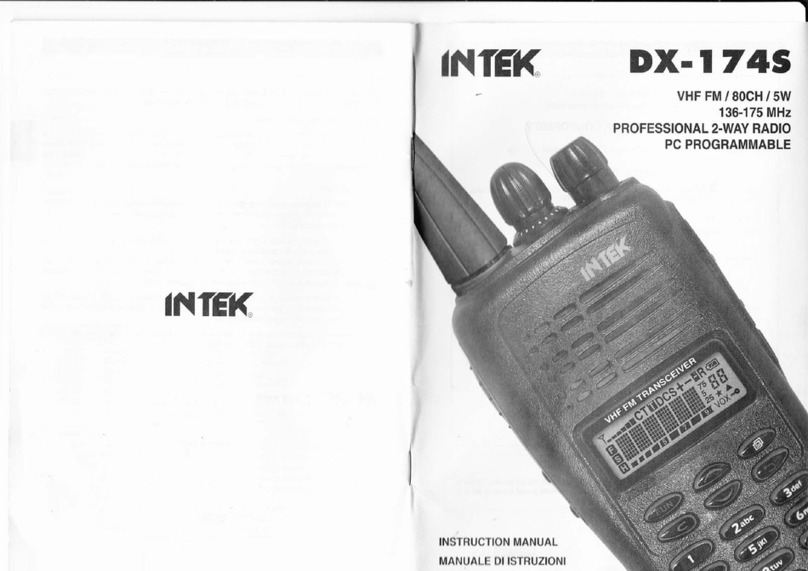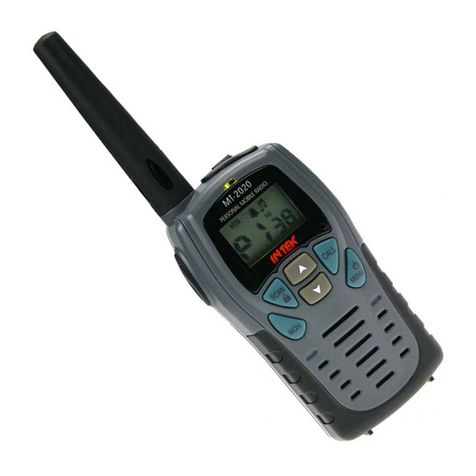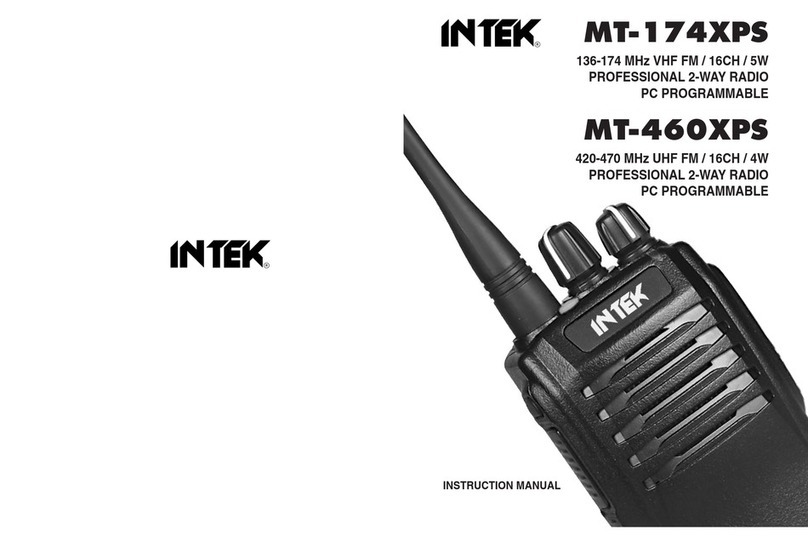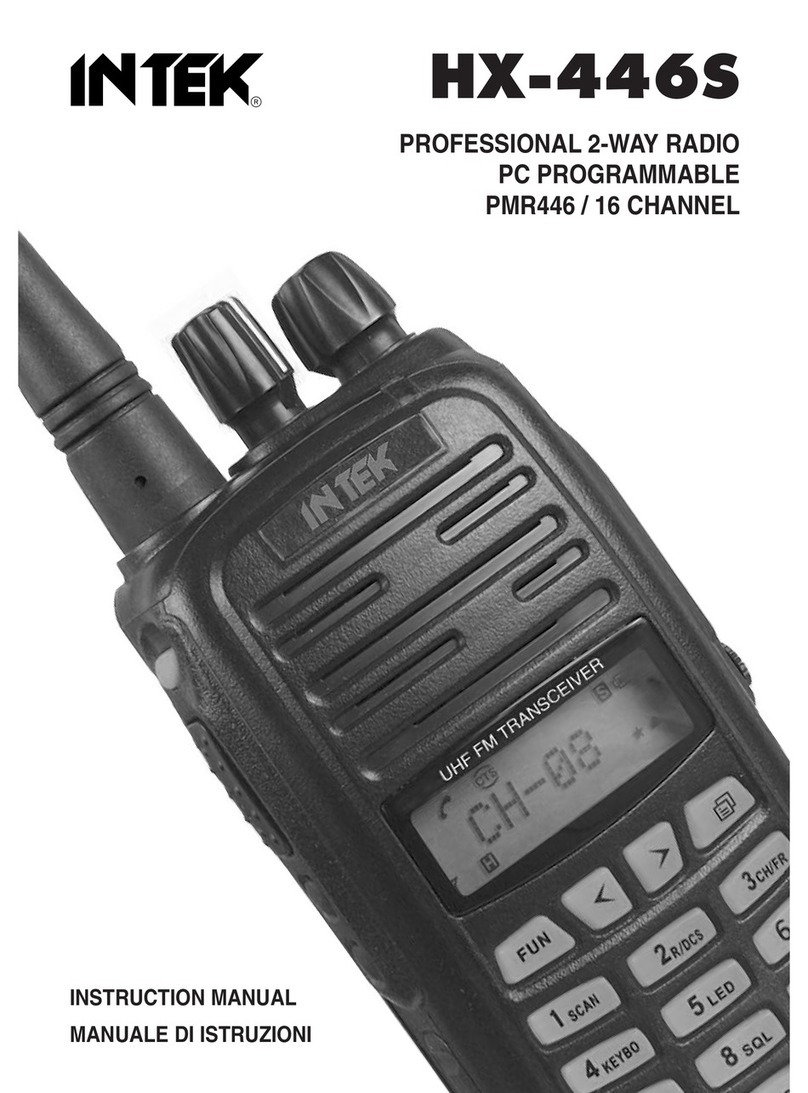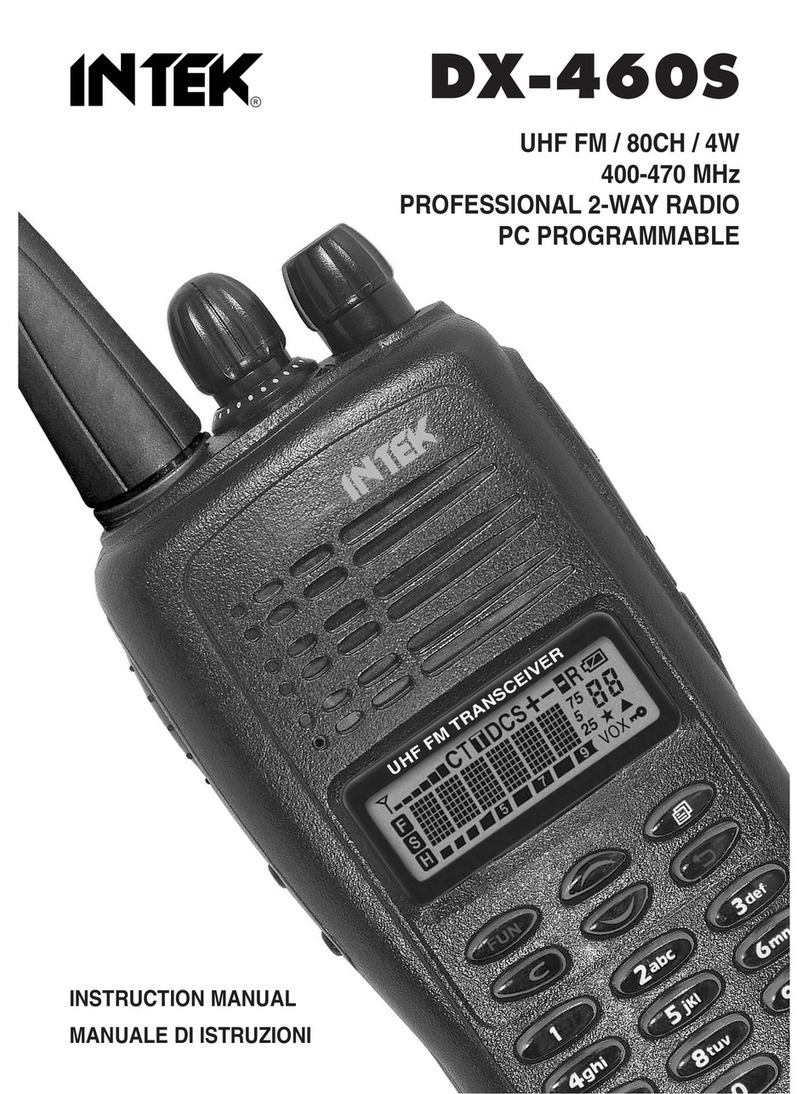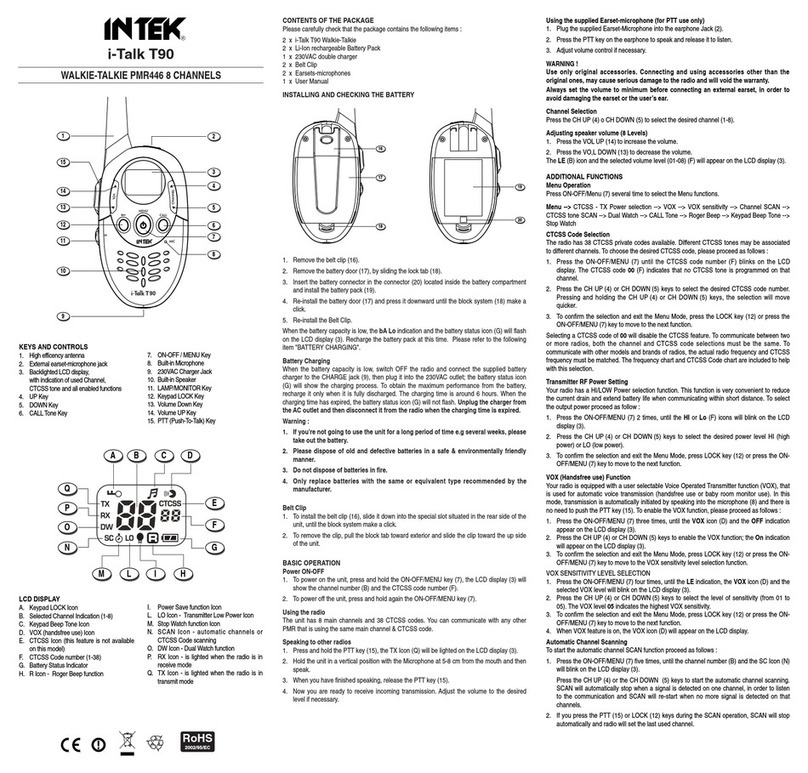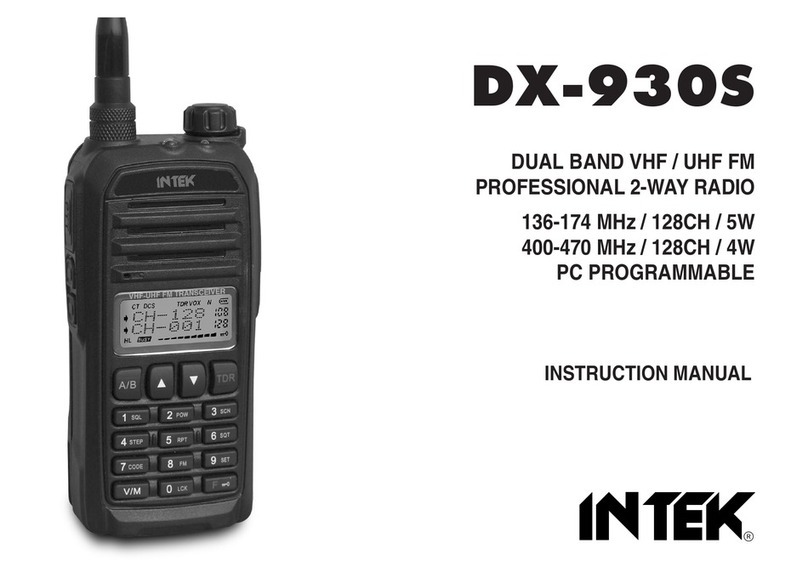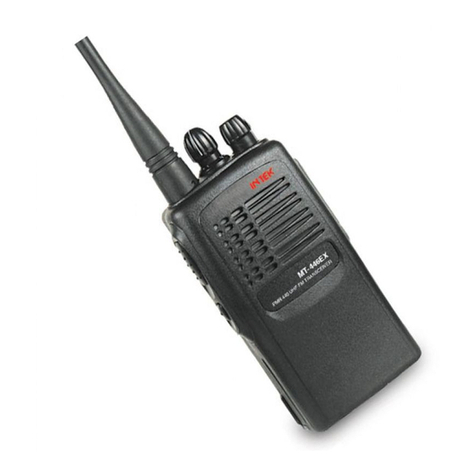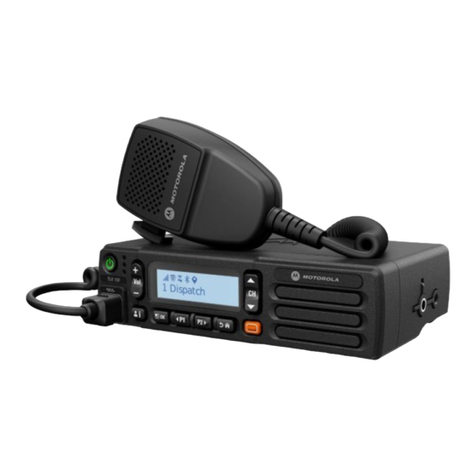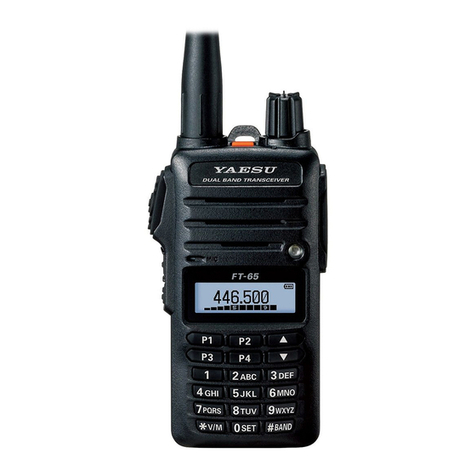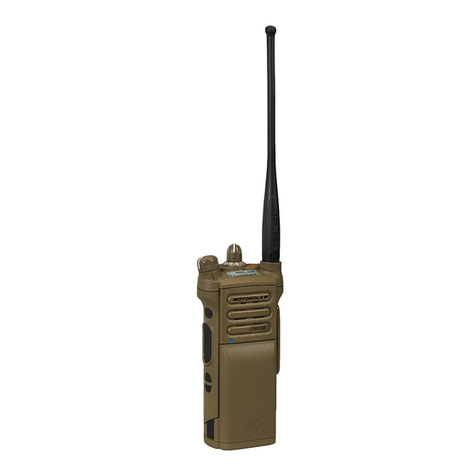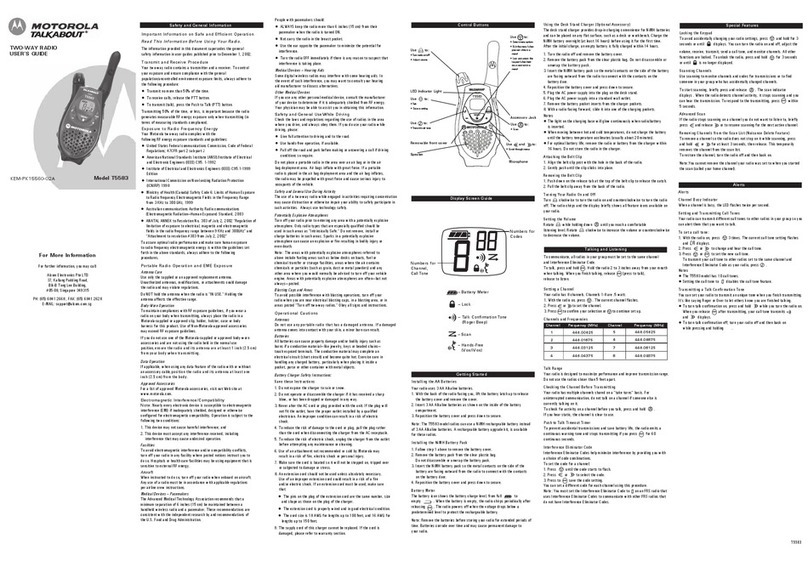Created by: Approved by: Rev.No:
For Stage: Release Date: Page: 5 Of 57
Model No: 3420 Drawing No:
Customer : Model No:
H 520 PLUS Rev. Date:
THEORY OF OPERATIONS
TRANSMITTER
A. RF Amplification
The output of double AMP Q201 is fed through tuning T203 and T204 to the base of pre driver AMP Q202. The
output is then supplied to RF driver AMP Q203. The output of Q203 is supplied with tuning circuit L204 and C214,
C215, C216 and goes to the base of final RF AMP Q204. The output of Q204 is supplied to the antenna through
L-C tuning circuit.
B. Circuit for Suppression of Spurious Radiation
The tuning circuit between the output of final AMP Q204 and antenna, 5-stage “PHI” network C221, C219, C220,
L206, C223, C245, L207, C241, C228, C240, L208, C242, C230, C229, L209, C234, C233, C232, L210, C243,
C235, C236 serves as a spurious radiation suppressor . This network also serves to match the impedance
between TX power AMP Q204 and the antenna.
C. Circuit for Limiting Power
After finished all alignment, the constant voltage supply circuit limits the available power 4 W or slightly less.
RV501 and corresponding three transistors Q509, Q502, Q501 control supply voltage of RF amplifier and other
circuits.
Tune all the trimmer parts for maximum indication of RF power meter and adjust RV501 to make 4 w indication
of RF power meter.
The tuning is adjusted so that the actual power is from 3.8 to 4.0 W. There are no other additional controls for
adjusting the TX output power.
D. Modulation Control
a. FM
The mic input is fed to audio amplifier IC KIA324 which drives modulation varicap diode D302 in the VCO circuit.
RV701 limits the incoming modulation audio levels to inhibit over modulation. While reading the modulation factor
on the modulation analyzing equipment, adjust RV701 shall not exceed +/-1.6 KHz/Dev. After 20 dB up from
1.25 KHz/1.2 KHz/Dev. Audio level
b. AM

